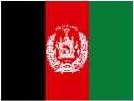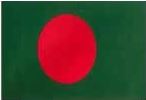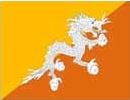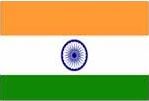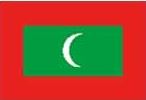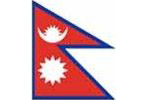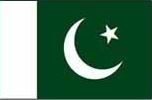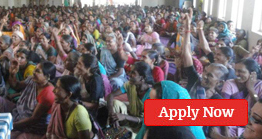You are here
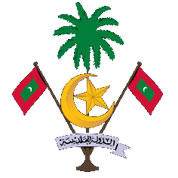
Maldives Emblem
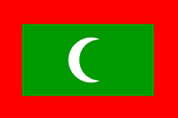
Maldives Flag
Introduction - Maldives
Maldives was long a sultanate, first under Dutch and then under British protection. It became a republic in 1968, three years after independence. President Maumoon Abdul GAYOOM dominated the islands' political scene for 30 years...More
-

Introduction
Maldives -

Geography
Maldives -

People
Maldives -

Government
Maldives -

Economy
Maldives -

Communication
Maldives -

Transportation
Maldives
Introduction - Maldives 
Maldives was long a sultanate, first under Dutch and then under British protection. It became a republic in 1968, three years after independence. President Maumoon Abdul GAYOOM dominated the islands' political scene for 30 years, elected to six successive terms by single-party referendums. Following riots in the capital Male in August 2004, the president and his government pledged to embark upon democratic reforms including a more representative political system and expanded political freedoms. Progress was sluggish, however, and many promised reforms were slow to be realized. Nonetheless, political parties were legalized in 2005. In June 2008, a constituent assembly - termed the "Special Majlis" - finalized a new constitution, which was ratified by the president in August. The first-ever presidential elections under a multi-candidate, multi-party system were held in October 2008. GAYOOM was defeated in a runoff poll by Mohamed NASHEED, a political activist who had been jailed several years earlier by the former regime. Challenges facing President NASHEED include strengthening democracy and combating poverty and drug abuse. Maldives officials have played a prominent role in the international climate change discussion (due to the islands' low elevation and the threat from sea-level rise) and on the United Nations Human Rights Council.
Geography - Maldives 
Location:
Southern Asia, group of atolls in the Indian Ocean, south-southwest of India
Geographic coordinates:
3 15 N, 73 00 E
Map references:
Asia
Area:
total: 298 sq km
country comparison to the world: 209
land: 298 sq km
water: 0 sq km
Area - comparative:
about 1.7 times the size of Washington, DC
Land boundaries:
0 km
Coastline:
644 km
Maritime claims:
measured from claimed archipelagic straight baselines
territorial sea: 12 nm
contiguous zone: 24 nm
exclusive economic zone: 200 nm
Climate:
tropical; hot, humid; dry, northeast monsoon (November to March); rainy, southwest monsoon (June to August)
Terrain:
flat, with white sandy beaches
Elevation extremes:
lowest point: Indian Ocean 0 m
highest point: unnamed location on Viligili in the Addu Atholhu 2.4 m
Natural resources:
fish
Land use:
arable land: 13.33%
permanent crops: 30%
other: 56.67% (2005)
Irrigated land:
NA
Total renewable water resources:
0.03 cu km (1999)
Freshwater withdrawal (domestic/industrial/agricultural):
total: 0.003 cu km/yr (98%/2%/0%)
per capita: 9 cu m/yr (1987)
Natural hazards:
tsunamis; low elevation of islands makes them sensitive to sea level rise Environment - current issues:
depletion of freshwater aquifers threatens water supplies; global warming and sea level rise; coral reef bleaching
Environment - international agreements:
party to: Biodiversity, Climate Change, Climate Change-Kyoto Protocol, Desertification, Hazardous Wastes, Law of the Sea, Ozone Layer Protection, Ship Pollution signed, but not ratified: none of the selected agreements
Geography - note:
1,190 coral islands grouped into 26 atolls (200 inhabited islands, plus 80 islands with tourist resorts); archipelago with strategic location astride and along major sea lanes in Indian Ocean
People - Maldives 
Population:
436,330 (2017)
country comparison to the world: 176
Age structure:
0-14 years: 21.4% (male 42,871/female 41,162)
15-24 years: 20.21% (male 45,547/female 33,804)
25-54 years: 48.1% (male 106,701/female 82,187)
55-64 years: 5.85% (male 11,312/female 11,667)
65 years and over: 4.45% (male 8,042/female 9,416) (2017 est.)
Median age:
28.9 years
male: 26.8 years
female: 25.2 years (2011 est.)
Population growth rate:
2.0% annual change (2017)
country comparison to the world: 209
Birth rate:
14.401 births/1,000 population (2018)
country comparison to the world: 136
Death rate:
2.937 deaths/1,000 population (2017)
country comparison to the world: 209
Net migration rate:
28.45 migrant(s)/1,000 population (2015)
country comparison to the world: 214
Government - Maldives 
Country name:
conventional long form: Republic of Maldives
conventional short form: Maldives
local long form: Dhivehi Raajjeyge Jumhooriyyaa
local short form: Dhivehi Raajje
Government type:
republic
Capital:
name: Male
geographic coordinates: 4 10 N, 73 30 E
time difference: UTC+5 (10 hours ahead of Washington, DC during Standard Time)
Administrative divisions:
19 atolls (atholhu, singular and plural) and the capital city*; Alifu, Baa, Dhaalu, Faafu, Gaafu Alifu, Gaafu Dhaalu, Gnaviyani, Haa Alifu, Haa Dhaalu, Kaafu, Laamu, Lhaviyani, Maale (Male)*, Meemu, Noonu, Raa, Seenu, Shaviyani, Thaa, Vaavu
Independence:
26 July 1965 (from the UK)
National holiday:
Independence Day, 26 July (1965)
Constitution:
new constitution ratified 7 August 2008
Economy - Maldives 
Tourism, Maldives' largest economic activity, accounts for 28% of GDP and more than 60% of foreign exchange receipts. Over 90% of government tax revenue comes from import duties and tourism-related taxes. Fishing is the second leading sector, but the fish catch has dropped sharply in recent years. Agriculture and manufacturing continue to play a lesser role in the economy, constrained by the limited availability of cultivable land and the shortage of domestic labor. Most staple foods must be imported. In the last decade, real GDP growth averaged around 6% per year except for 2005, when GDP declined following the Indian Ocean tsunami, and in 2009, when GDP shrank by 3% as tourist arrivals declined and capital flows plunged in the wake of the global financial crisis. Falling tourist arrivals and fish exports, combined with high government spending on social needs, subsidies, and civil servant salaries contributed to a balance of payments crisis, which was eased with a December 2009, $79.3 million dollar IMF standby agreement. However, after the first two disbursements, the IMF withheld subsequent disbursements due to concerns over Maldives' growing budget deficit. Maldives has had chronic budget deficits in recent years and the government's plans to cut expenditures have not progressed well. A new Goods and Services Tax on Tourism (GST) was introduced in January 2011 and a new Business Profit Tax is to be introduced during the year. These taxes are expected to increase government revenue by about 25%. The government has privatized the main airport and is partially privatizing the energy sector. Tourism will remain the engine of the economy. The Government of the Maldives has aggressively promoted building new island resorts. Due to increasing tourist arrivals, the government expects GDP growth around 4.0% in 2011. Diversifying the economy beyond tourism and fishing, reforming public finance, and increasing employment opportunities are major challenges facing the government. Over the longer term Maldivian authorities worry about the impact of erosion and possible global warming on their low-lying country; 80% of the area is 1 meter or less above sea level.
GDP (purchasing power parity):
$2.734 billion (2010 est.)
country comparison to the world: 179
$2.532 billion (2009 est.)
$2.658 billion (2008 est.)
note: data are in 2010 US dollars
GDP (official exchange rate):
$1.87 billion (2010 est.)
GDP - real growth rate:
8% (2010 est.)
country comparison to the world: 18
-4.8% (2009 est.)
12.8% (2008 est.)
GDP - per capita (PPP):
$6,900 (2010 est.)
country comparison to the world: 133
$6,400 (2009 est.)
$6,900 (2008 est.)
note: data are in 2010 US dollars
GDP - composition by sector:
agriculture: 5.6%
industry: 16.9%
services: 77.5% (2009 est.)
Communication - Maldives 
Telephones - main lines in use:
21,136 (2016)
country comparison to the world: 162
Telephones - mobile cellular:
461,149 (2009)
country comparison to the world: 160
Telephone system:
general assessment: telephone services have improved; interatoll communication through microwave links; all inhabited islands and resorts are connected with telephone and fax service domestic: each island now has at least 1 public telephone, and there are mobile-cellular networks with a rapidly expanding subscribership that exceeds 100 per 100 persons
international: country code - 960; linked to international submarine cable Fiber-Optic Link Around the
Globe (FLAG); satellite earth station - 3 Intelsat (Indian Ocean) (2009)
Broadcast media:
state-owned radio and television monopoly until recently; state-owned TV operates 2 channels; 2 privately-owned TV stations; state owns Voice of Maldives and operates both an entertainment and a music-based station; there are 5 privately-owned radio broadcast stations operating (2009)
Internet country code:
.mv
Internet hosts:
2,164 (2010)
country comparison to the world: 153
Internet users:
86,400 (2009)
country comparison to the world: 163
Transportation - Maldives 
Airports:
5 (2010)
country comparison to the world: 180
Airports - with paved runways:
total: 3
over 3,047 m: 1
2,438 to 3,047 m: 1
914 to 1,523 m: 1 (2010)
Airports - with unpaved runways:
total: 2
914 to 1,523 m: 2 (2010)
Roadways:
total: 88 km
country comparison to the world: 214
paved roads: 88 km - 60 km in Male; 14 km on Addu Atolis; 14 km on Laamu
note: village roads are mainly compacted coral (2006)
Merchant marine:
total: 24
country comparison to the world: 94
by type: bulk carrier 1, cargo 20, petroleum tanker 1, refrigerated cargo 2 registered in other countries: 4 (Panama 3, Tuvalu 1) (2010)
Ports and terminals:
Male

